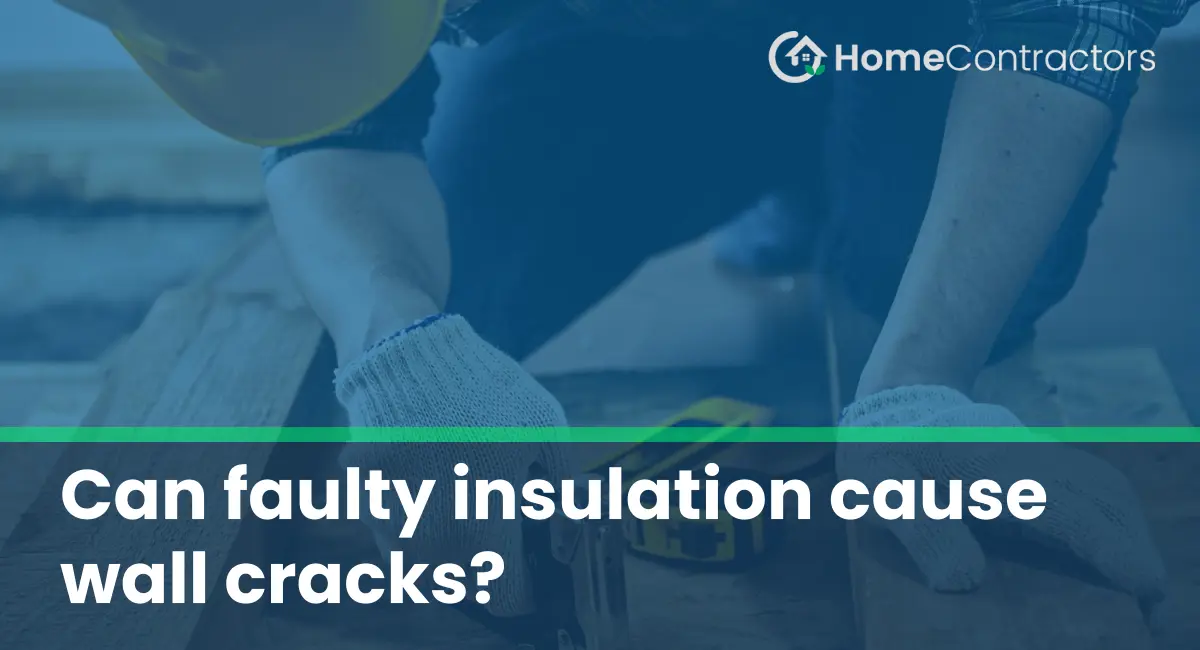Insulation plays a crucial role in maintaining a comfortable and energy-efficient environment within our homes. It helps to regulate temperature, reduce noise transmission, and prevent moisture accumulation. However, faulty insulation can lead to various issues, including the formation of wall cracks. In this article, we will delve into the details and explore how faulty insulation can potentially cause wall cracks.
Understanding insulation and its purpose
Insulation serves as a barrier between the interior and exterior of a building. It helps to prevent heat transfer and maintains a controlled indoor temperature. Insulation materials typically consist of foam, fiberglass, or cellulose, which are installed in walls, attics, and roofs. Correctly installed insulation can provide significant benefits such as reduced energy bills, increased comfort, and a healthier living environment.
Effects of faulty insulation
When insulation is improperly installed or starts to deteriorate over time, it can lead to several issues. Faulty insulation can decrease its effectiveness in regulating temperature, resulting in rooms that are difficult to heat or cool. This can lead to uncomfortable living conditions, increased energy consumption, and higher utility bills.
In addition to temperature regulation, insulation also plays a crucial role in preventing moisture accumulation. Moisture can enter the walls from various sources such as rain or leaks. Proper insulation helps to control condensation and prevents water from seeping into the walls. Faulty insulation can fail at this task, leading to increased moisture levels and potential damage to the structural integrity of the walls.
How faulty insulation can cause wall cracks
Insulation materials expand and contract with temperature changes. When installed correctly, they can handle these movements without causing any harm. However, faulty insulation can exacerbate these movements and cause stress on the walls. Over time, this increased stress can lead to cracks in the walls.
One common type of insulation material is foam, which is sprayed into walls and expands to fill gaps and cavities. If the foam installation is not done evenly or if the foam is improperly mixed, it can expand too much, creating pressure against the walls. This uneven expansion can lead to cracks forming on the surface.
Another issue with faulty insulation is its inability to prevent moisture from entering the walls. When moisture seeps through the insulation and reaches the wall material, it can cause it to expand and contract as it dries out. This constant expansion and contraction can eventually lead to cracks in the wall.
Furthermore, some insulation materials, such as fiberglass, can settle and compress over time. This settling can create voids or gaps in the insulation, reducing its effectiveness. As a result, the walls may experience uneven temperature changes, leading to thermal stress and eventually cracks.
Preventing wall cracks caused by faulty insulation
To avoid wall cracks due to faulty insulation, it is essential to prioritize proper installation and regular maintenance. Here are some steps that can help prevent such issues:
- Hire professional installers: Ensure that insulation is installed by experienced professionals who follow industry best practices. Proper installation techniques will minimize the chances of insulation-related problems.
- Regular inspections: Schedule regular inspections to check the condition of your insulation. Look for signs of deterioration, settling, or gaps, and address any issues promptly.
- Moisture control: Maintain proper moisture control by addressing any leaks or water intrusion promptly. This will prevent moisture from damaging the insulation and affecting the walls.
- Monitor temperature fluctuations: Keep an eye on temperature fluctuations within your home. If certain areas are consistently hotter or colder, it may indicate insulation issues. Address these problems promptly to avoid potential wall cracks.
Faulty insulation can indeed cause wall cracks due to increased stress and movement. It is crucial to understand the importance of proper insulation installation and maintenance to avoid these issues. By hiring professionals, conducting regular inspections, controlling moisture, and monitoring temperature fluctuations, homeowners can ensure their insulation functions effectively and prevent potential damage to their walls.
